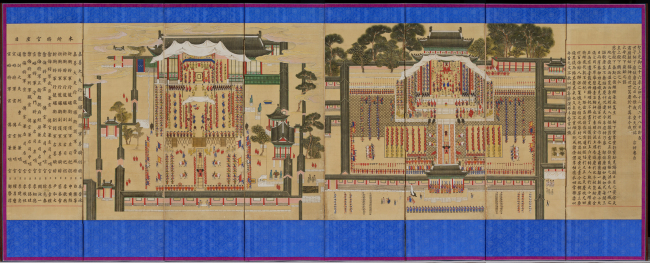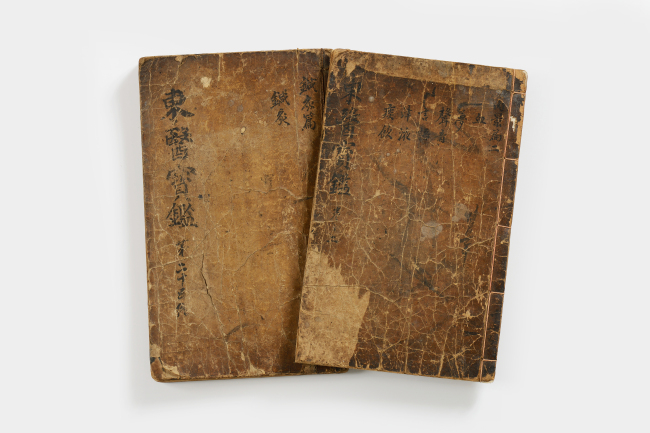Joseon royal’s endeavor for longevity
National Palace Museum exhibits medical records, devices of Joseon Dynasty kings and families
By Korea HeraldPublished : July 24, 2014 - 20:54
In 1879, 5-year-old crown prince Sunjong was diagnosed with smallpox, a disease that claimed many lives during the Joseon Dynasty (1392-1910). But the prince began to show signs of improvement, and his father King Gojong hosted a party when the royal doctor confirmed his full recovery.
That feast is displayed on an eight-panel folding screen at the National Palace Museum of Korea, in a special exhibition on Joseon’s royal medicine.
“The Birth, Aging, Illness and Death of the Royal Family of the Joseon Dynasty: Guarding against Diseases” highlights the royal family’s yearning for longevity.
That feast is displayed on an eight-panel folding screen at the National Palace Museum of Korea, in a special exhibition on Joseon’s royal medicine.
“The Birth, Aging, Illness and Death of the Royal Family of the Joseon Dynasty: Guarding against Diseases” highlights the royal family’s yearning for longevity.

“Physical and mental health for a long and happy life is anyone’s desire, even the King,” said Lee Gwi-young, general manager of the museum. “The exhibition sheds light on diseases which afflicted kings, royal members’ agony and our ancestors’ tireless efforts to cure diseases.”
The exhibition also displays diverse medicines, medical devices, publications and other artifacts that offer a glimpse into the remedies of the time.
The 120 artifacts on view include the first edition of Dongui Bogam, an encyclopedia on traditional Korean medicine compiled by royal physician Heo Jun in 1613.
“Only a few copies of Dongui Bogam remain today,” said Lee Kyung-lock, director of Handok Museum of Medicine and Pharmacy. The first medical museum in Korea is hosting the exhibition together with the National Palace Museum to mark the 50th anniversary of its opening.

“It contains medical information from the Joseon period and China, with symptoms and remedies categorized in detail,” Lee added.
“White Porcelain Medicine Kettle” has a porcelain lid and a silver spoon across the lid. The spoon turns black when in contact with poison. A meticulous silver lock is attached to the lid to prevent secret insertion of substances.
Taeuiwon Ilgi, a journal kept by the royal clinic of Taeuiwon, documents its daily duties and archives its records. The book describes King Gojong’s last minutes.
“Symptoms of stroke appeared on his body. It was a critical moment and we prescribed pills and medicinal tea. At 6:35 a.m., the king passed away in the west ondol room in Hamnyungjeon, Deoksugung Palace, Seoul.”
Special lectures, concerts and experimental programs for adults and children will complement the exhibition. The exhibition will run until Sept. 14 at the museum in Seoul. For more information, call (02) 3701-7634 or visit www.gogung.go.kr.
By Ahn Sung-mi (sahn@heraldcorp.com)
-
Articles by Korea Herald









![[Hello India] Hyundai Motor vows to boost 'clean mobility' in India](http://res.heraldm.com/phpwas/restmb_idxmake.php?idx=644&simg=/content/image/2024/04/25/20240425050672_0.jpg&u=)









